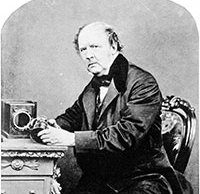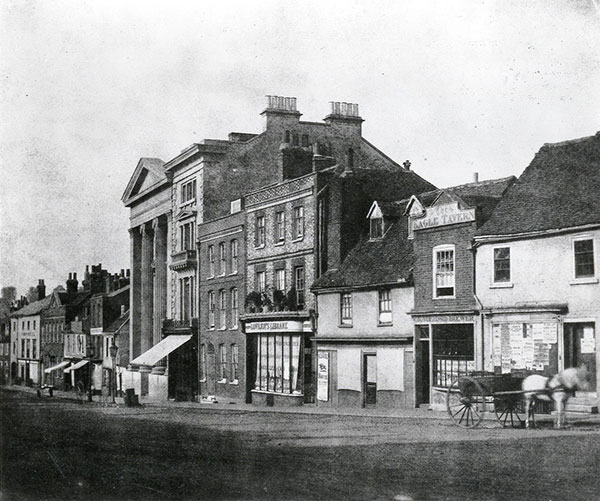Move over Daguerre: William Henry Fox Talbot, a pioneer and gifted photographer on exhibit
posted Friday, April 15, 2016 at 4:14 PM EDT

It might be difficult to imagine, but photography was at one time a field occupied almost entirely by scientists. In the mid-19th century, one of these scientists, William Henry Fox Talbot, invented a process which would shape photography for well over a century, the negative-positive process.
Unlike some of his contemporaries, Fox Talbot was not just a scientist and inventor, but he also made important contributions to photography as an artistic medium. His work is now being celebrated until September 11th at the Science Museum in London.
The exhibition's co-curator, Russell Roberts, says of Talbot: "Photography, without question, was one of the most profound inventions of 19th-century Britain. Talbot not only set in motion a new way of seeing but, through his writings and experiments, identified the distinctiveness of photography as an art, science, and industry."
Talbot's 1839 book, The Pencil of Nature, was actually "the first commercial publication to be illustrated using photographs." Back then, there was the very real possibility of your photographs fading away and being lost forever. This issue of permanence takes an entirely different form now with the proliferation of digital imagery, but permanence is a theme in the Fox Talbot: Dawn of the Photograph exhibition. There is something distinctly special about seeing preserved photographs from the 19th century; it is like looking back in time. Unfortunately, Talbot's process was actually very prone to fading, something that would prove problematic as Talbot tried to go head-to-head with Louis Daguerre.

The Economist recently wrote an article about Talbot and the origins of photography. It was in the 1830s while at a lake with his friends that Talbot mused about the possibility of permanently imprinting natural images onto paper. It was not until six years later that he hastily announced his negative-positive process, in response to Louis Daguerre announcing his Daguerreotype process. Talbot recalled his story about the lake to make it publicly known that his own work had preceded Daguerre's.
Due in part to Daguerre's commercial intellect and the French government's support of his work, Daguerreotypes were wildly popular as Talbot initially struggled to get his process a foothold in the market. Nonetheless, the negative-positive process had a distinct advantage over Daguerreotype photography: Multiple prints could be made from the negative-positive original. This concept of making multiple prints from a single original was hugely important as photography become more commercially available. Ultimately, it took other inventors to improve upon Talbot's original work.
In addition to his legacy as the pioneer of an important photographic process, he was known for his beautiful photography. The Fox Talbot: Dawn of the Photograph exhibit is the first time many of his images have been brought together and shown.
For more information on the exhibit, see here.
(Seen via Alphr and The Economist. Portrait of Fox Talbot by John Moffat in 1864. This image is in the public domain.)